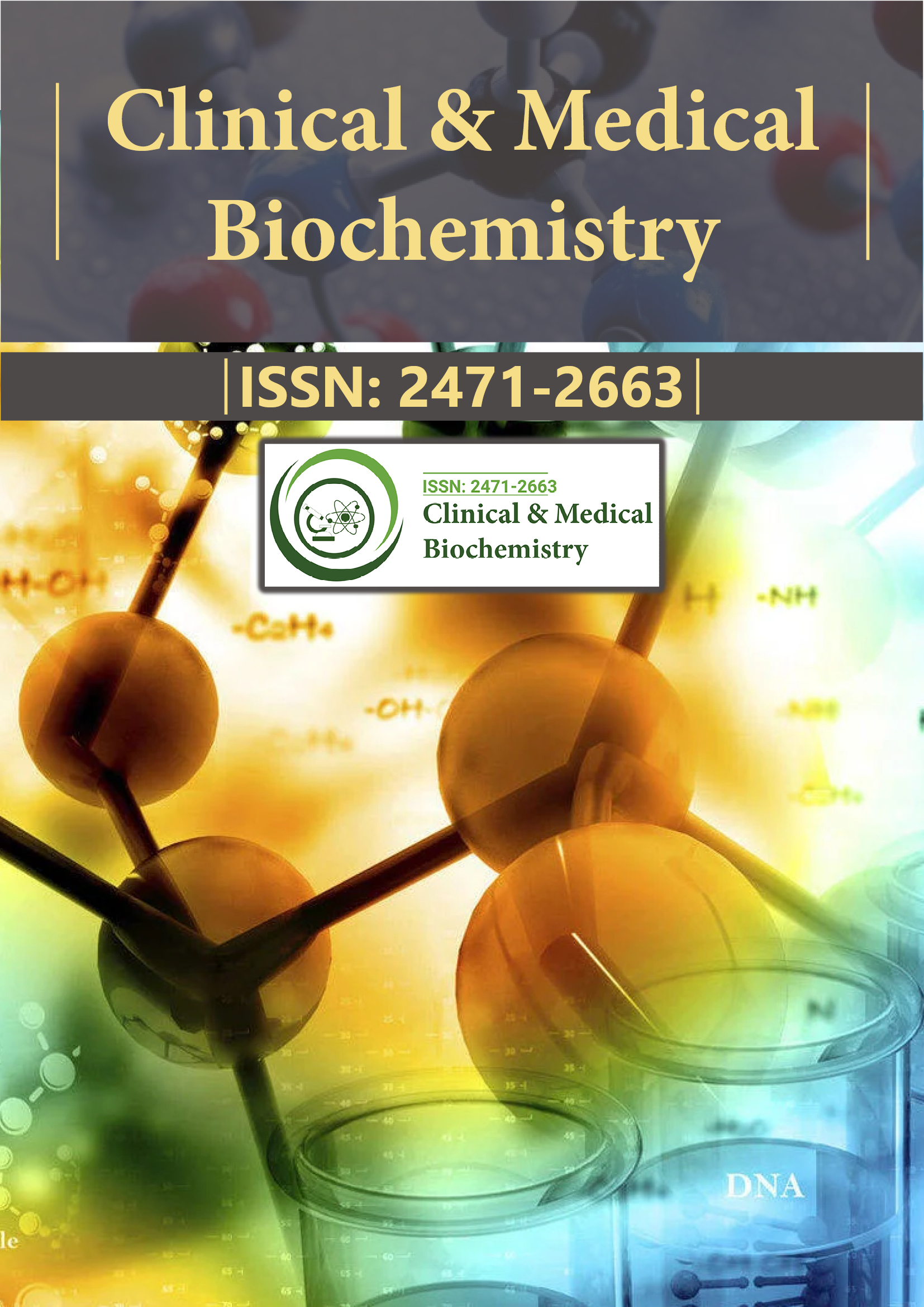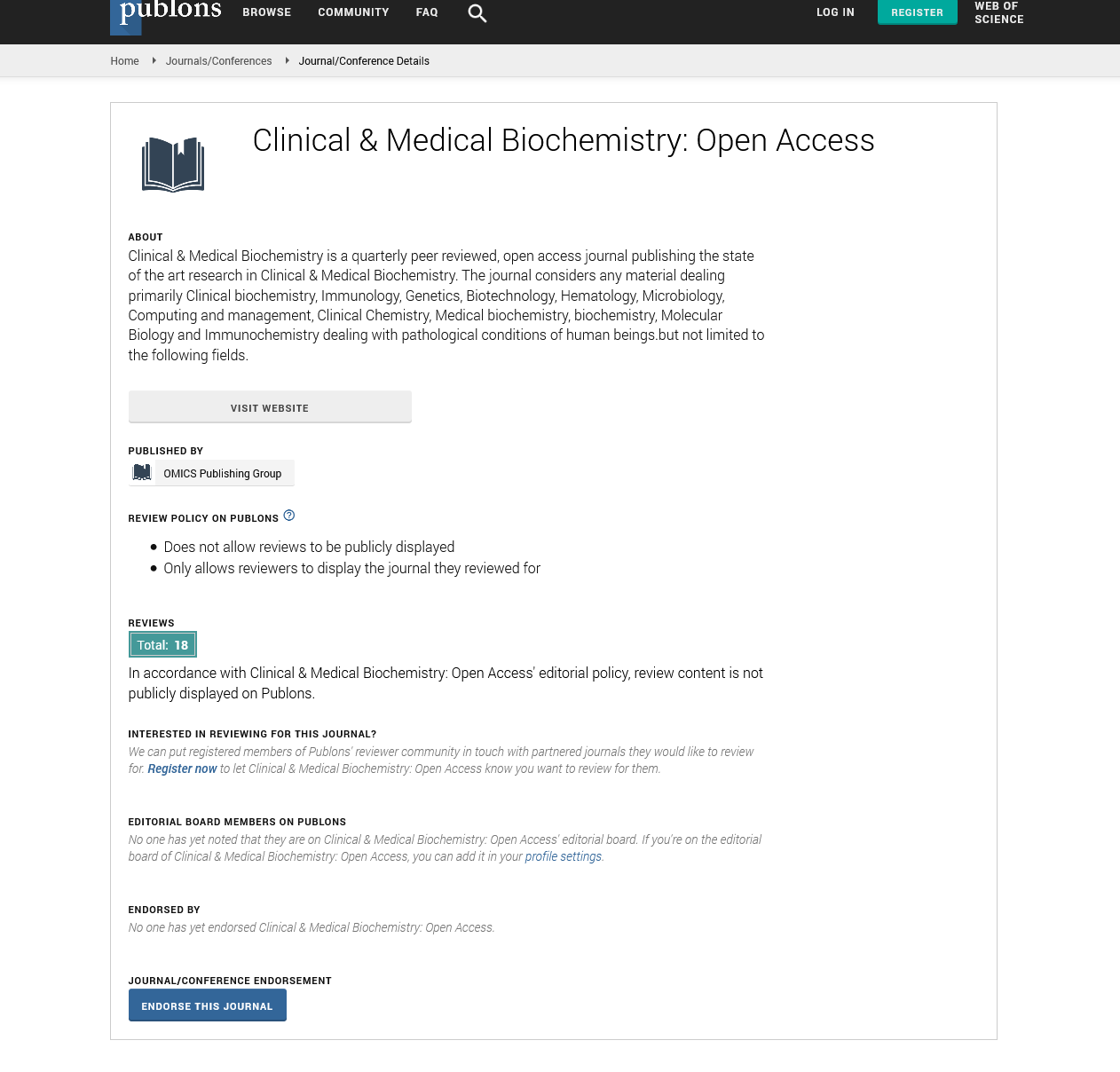Indexed In
- RefSeek
- Directory of Research Journal Indexing (DRJI)
- Hamdard University
- EBSCO A-Z
- OCLC- WorldCat
- Scholarsteer
- Publons
- Euro Pub
- Google Scholar
Useful Links
Share This Page
Journal Flyer

Open Access Journals
- Agri and Aquaculture
- Biochemistry
- Bioinformatics & Systems Biology
- Business & Management
- Chemistry
- Clinical Sciences
- Engineering
- Food & Nutrition
- General Science
- Genetics & Molecular Biology
- Immunology & Microbiology
- Medical Sciences
- Neuroscience & Psychology
- Nursing & Health Care
- Pharmaceutical Sciences
Commentary - (2025) Volume 11, Issue 2
Understanding Protein Metabolism and Its Vital Role in Growth, Repair, and Energy
Jorg Krieger*Received: 30-Apr-2025, Manuscript No. CMBO-25-29626; Editor assigned: 02-May-2025, Pre QC No. CMBO-25-29626; Reviewed: 16-May-2025, QC No. CMBO-25-29626; Revised: 23-May-2025, Manuscript No. CMBO-25-29626; Published: 30-May-2025, DOI: 10.35841/2471-2663.25.11.249
Description
Protein metabolism is a critical biochemical process that encompasses the digestion, absorption, synthesis and breakdown of proteins within the body. Proteins are essential macromolecules made up of amino acids, which serve as building blocks for tissues, enzymes, hormones and various cellular components. The metabolism of proteins ensures that the body maintains nitrogen balance, supports tissue repair, produces vital compounds and provides energy when necessary. Proper regulation of protein metabolism is fundamental for growth, immune function and overall physiological homeostasis.
The process begins with the ingestion of dietary proteins, which are primarily derived from both animal and plant sources, including meat, dairy, legumes and grains. Once consumed, proteins are broken down in the stomach by the action of hydrochloric acid and the enzyme pepsin, which denature and hydrolyze proteins into smaller peptide chains. These peptides are further digested in the small intestine by enzymes such as trypsin, chymotrypsin and peptidases, producing free amino acids and small peptides that are absorbed into the bloodstream through the intestinal lining.
Once absorbed, amino acids enter the liver via the portal vein, where they are either used for immediate protein synthesis, converted into other biologically active molecules, or deaminated for energy production. Protein synthesis involves assembling amino acids into new proteins needed for muscle repair, enzyme activity, immune responses and various structural and functional cellular components. This anabolic process is regulated by hormones such as insulin and growth hormone, which stimulate the uptake and incorporation of amino acids into body tissues, especially after meals or during growth and recovery periods.
When amino acids are not required for new protein synthesis, they undergo catabolism, a process involving the removal of their amino group through transamination or deamination. The remaining carbon skeletons are then converted into intermediates that can enter metabolic pathways like glycolysis or the citric acid cycle for energy production. The removed amino groups are converted into ammonia, a toxic compound that is subsequently transformed into urea in the liver through the urea cycle. Urea is then excreted from the body by the kidneys via the urine. This efficient nitrogen disposal mechanism is essential to prevent the toxic accumulation of ammonia in the body, which can lead to severe health issues such as hepatic encephalopathy.
Protein metabolism is highly dynamic and responsive to physiological needs. During periods of fasting, illness, or intense physical activity, the body may increase protein breakdown to supply amino acids for gluconeogenesis, the process of generating glucose from non-carbohydrate sources. This response ensures that energy needs are met when carbohydrate availability is low. However, chronic protein breakdown without adequate dietary intake can lead to muscle wasting and impaired physiological function, highlighting the importance of adequate protein consumption in diet, especially for the elderly, athletes and individuals recovering from illness.
Hormonal regulation plays a significant role in maintaining protein balance. Insulin promotes protein synthesis by enhancing amino acid uptake, while glucagon, cortisol and catecholamines favor protein degradation during stress or energy deficiency. Thyroid hormones also influence protein turnover by modulating both anabolic and catabolic activities in tissues. The balance between protein synthesis and degradation determines the net protein status of the body, which can be either positive, negative, or in equilibrium depending on various conditions such as growth, disease, or malnutrition.
In special physiological states like pregnancy, lactation and childhood, the body experiences a positive nitrogen balance, meaning protein synthesis exceeds breakdown to support tissue growth and development. Conversely, during trauma, infection, or malnutrition, the body enters a negative nitrogen balance due to increased protein catabolism and insufficient intake. This condition can impair immune function, delay healing and contribute to overall morbidity. Therefore, medical nutrition therapy often includes ensuring adequate protein intake to restore and maintain nitrogen balance during recovery.
Protein metabolism also involves the synthesis of specialized molecules such as enzymes, hormones, neurotransmitters and transport proteins. For instance, amino acids like tyrosine and tryptophan serve as precursors for important neurotransmitters such as dopamine and serotonin, while others like arginine are involved in the production of nitric oxide, a molecule critical for vascular function. Additionally, proteins like hemoglobin, albumin and immunoglobulins play vital roles in oxygen transport, osmotic pressure regulation and immune defense, respectively. The ability of the body to adapt protein metabolism to meet these diverse needs is a testament to its biochemical complexity and importance.
Disorders of protein metabolism can have serious consequences. Conditions such as phenylketonuria, maple syrup urine disease and homocystinuria are genetic metabolic disorders that affect specific enzymes involved in amino acid metabolism. These conditions require early diagnosis and strict dietary management to prevent cognitive impairment and other complications. Furthermore, chronic kidney disease impairs the excretion of urea, leading to a buildup of nitrogenous wastes in the blood. Monitoring and adjusting protein intake becomes crucial in managing such patients to avoid further metabolic derangements.
Conclusion
In conclusion, protein metabolism is a vital and multifaceted process that enables the body to utilize amino acids for growth, maintenance, repair and energy. It encompasses a finely tuned network of enzymatic reactions, hormonal signals and nutrient availability that respond to the body's changing needs. Proper protein metabolism ensures the health and functionality of nearly every system in the body, while disturbances in this process can lead to significant clinical challenges. Continued research into protein metabolism not only enhances our understanding of basic human physiology but also informs the management of numerous metabolic and nutritional disorders.
Citation: Krieger J (2025). Understanding Protein Metabolism and Its Vital Role in Growth, Repair and Energy. Clin Med Bio Chem. 11:249.
Copyright: © 2025 Krieger J. This is an open-access article distributed under the terms of the Creative Commons Attribution License, which permits unrestricted use, distribution and reproduction in any medium, provided the original author and source are credited.

